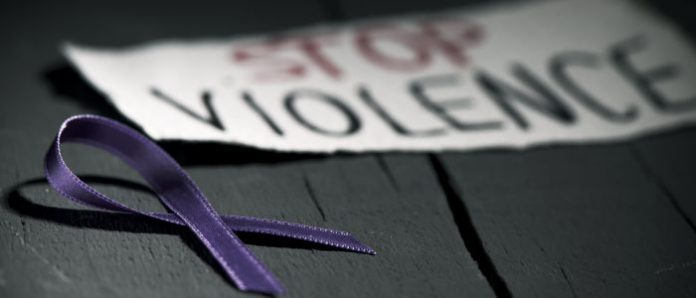This article is written by Akshaya Chintala from Symbiosis Law School, Hyderabad edited by Oishika Banerji of Amity Law School, Kolkata. The article is about the constitutional perspective of the Domestic Violence Act.
Table of Contents
Introduction
This Article aims to delve into the various types of violence against women in India and it tries to examine how various societies address violence prevention. The article is focused on how societies perceive violence and other issues involving the development and empowerment of women in India. It critically analyses the PWDVA, 2005 stating the main causes and implications of domestic violence in India. Acceptance of unequal gender norms by women is still prevailing in society. In our society as women are often subjected to silence and are always under the hands or authority of their male counterparts, the article tries to throw light upon the Unreported cases of domestic violence against women where it moves towards a concept of social silence, tolerance, and inhibition. The article concludes by analyzing the challenges faced by women in various fields such as access to education, employment opportunities, and change in social attitudes towards women which are hindrances for their empowerment.
Constitutional provisions
The enactment in question was adopted by the Parliament based on Article 253 of the Constitution. This law confers on Parliament the right to pass legislation in compliance with international treaties, conventions, etc. The Domestic Violence Act was introduced in recognition of the recommendations of the UN CEDAW Commission. The Act covers all the provisions of the Specific Recommendations set out in General Recommendation 19, 1992.
The Statement of Objects and Reasons states that the Act was enacted in the light of the human rights secured under Articles 14, 15, and 21. Article 21 confers the right to life and liberty on a negative basis, stating that it can not be taken away except by a process formed by law which, as a result of judicial decisions, is expected to be fair, just, and rational. The right to life has been held to include, among others, the following rights (reflected in the Act):
1. The right to be free from violence
Francis Coralie Mullin v. Union Territory Delhi, Administrator Supreme Court, Any act that harms or impairs or interferes with the use of any limb or faculty of an individual stated, either permanently or temporarily, shall be within the scope of the prohibition of Article 21. This right is incorporated into the Act by the definition of physical abuse, which constitutes domestic violence. Physical violence is said to consist of acts or activities of a nature that cause physical damage, damage or danger to life, limb or health, or impede the safety or development of the aggrieved individual. In addition, the Act also contains certain acts of physical violence and other acts of physical violence as envisaged in the Indian Penal Code in the sense of the definition of domestic violence. By adopting such an expansive definition, the Act protects women’s rights against violence.
2. The right to dignity
In Ahmedabad Municipal Corporation v. Nawab Khan Gulab Khan, The Supreme Court stressed that the right to life included in its scope the right to live with human dignity, basing its opinion on a host of cases that had been decided in favour of this proposal. The right to dignity would include the right to be subjected to sexual acts of humiliation.
Article 14 provides for an equal rights provision. This reflects equality before the law and equal treatment under the law. Section 14 forbids class legislation but provides for classification for legislative purposes. The statute does not become illegal simply because it applies to one group of individuals and not to another. Where the law has an impact on classification and is challenged as violating this Article, the law can be considered valid if it meets the following two conditions:
- The distinction must be based on certain intelligible distinctions,
- There must be a logical connection between this disparity and the purpose that the legislation seeks to accomplish.
Article 15 precludes discrimination on grounds of religion, caste, sex, race, etc, but allows the State to lay down special provisions for certain classes of persons, including women and children.
The Domestic Violence Act 2005 supports the rights of women secured by Sections 14 and 15. Domestic abuse is one of the factors that impede women ‘s advancement. Article 15 precludes discrimination on grounds of faith, caste, age, race, etc. but allows the State to lay down special rules for other groups of people, including women and children.
The Domestic Abuse Act recognizes the rights of women under Sections 14 and 15. Domestic abuse is one of the factors that hinder the advancement of women. This should be noted that women are usually victims of domestic abuse, not men. At this point, it is also important to bear in mind Article 15(3), which empowers the State to pass such legislation for the benefit of women, thus creating an exception in favor of the application of Article 15(1).
Key features of PWDVA 2005
Domestic Violence has a long-lost history in India. During the late 1980s, many women-oriented organizations started a wide variety of movements to prevent violence against women which had a nation-wide impact. Some of these Acts include the Sati Prevention Act 1987, Protection of women from Domestic Violence Act 2005, etc. Domestic violence is the outcome of the deeply rooted patriarchal mindset of Indian society and the pre-established unequal relationships between women and men. The causes and factors for domestic violence in India are due to the lack of social support and economic opportunities available for women which makes women vulnerable.
Although, now there is a growing awareness of the domestic violence Act as an Act punishable by law. The PWDVA is the outcome of several years of protests and militancy to achieve what it has become today. This Act tries to cover women from all domestic relationships which include mothers, sisters, widows, daughters, etc. The Act provides in detail definitions of domestic violence which include emotional and economic threats to life. The Act also introduced a few tools like creating protection officers to mediate between women and courts.
Since 2005, to date, the implementation of the PWDVA has largely remained undone. Even though this Act was applauded by many women activists the Act has various issues and loopholes and the targets promised are yet to be accomplished. There exists a lack of clarity on duties and responsibilities and due to this poor coordination at the local level continues between union and state governments with which the reporting formats issued by the center do not fit within the state model of implementation. There exists an absence of effective outreach programs and availability of service provisions remedies, and legal relief is extremely low this is because of lack of sufficient attention provided to monitor the effective implementation of the Act.
Providing compensation to the victims
One of the key features of the Act was to provide immediate compensation to the victims which continues to be a challenge. Police officers themselves are not well guided about the service providers who can provide immediate compensations for the damages caused to the victims. Thus, the immediate compensation as promised in the Act certainly cripples a woman’s access to her legal remedy. In conclusion, for any legislation to have an effective result, it has to undergo a long procedure of democratic processes. It needs a backup plan to workout effectively but in this domestic violence Act, it did not happen in this similar manner because of a Lack of evaluation and monitoring analysis of success and failure of previous ‘Pro-Woman’ social legislations.
To secure women’s rights
The Act will play a stellar role in securing the rights of women in the household and in securing them from domestic abuse. In the first place, the identification of domestic abuse as something intolerable, where it has become yet another social norm, is important and even commendable in a patriarchal society. Recognizing the rights of women and the violation of those rights, the next step is to provide innovative and effective remedies for the same. To date, the conceptualization of the Act is exemplary.
However, one thing the writers know is that they are friends in the Act is that it sweeps away male children. Although there are interpretations to the contrary, it is the opinion of the authors that the Act does not extend its protection to male children. Although the Act describes a child as a person under the age of 18 years, at all times, the definition of domestic violence applies only to an aggrieved person and not to a child; the only relevant place in which the child is referred to is Section 18(c), where it is stated that a magistrate may pass a protection order that prevents the respondent from entering the child’s school. It could be argued that the Act was passed to address the needs of women, not men. After all, the very title of the Act suggests that it has been enacted to protect women’s rights. It must be borne in mind, however, that domestic abuse, even if faced mainly by women, be they husbands, mothers, sisters, or sons, is also often directed towards male children. This seems to be a weak reason to say that male children should not be provided readily accessible relief from domestic abuse solely because of their gender. Even if other forms of violence can be dealt with sufficiently by the IPC (though this hardly seems to be the case), it is a fact that the sexual exploitation of male children can not be remedied in any reasonable way.
Reference may be made to the Sakshi case and the subsequent 172nd Law Commission report, Where it has been argued, among other things, that the infringement of rape as dealt with in the IPC should be defined in a gender-neutral way so that protection can also be extended to male children. It was important to bear in mind the increasing and growing occurrence of sexual harassment of infants, males, and females. When it has been recognized that male children are as much affected by sexual harassment by female children as possible, it must be acknowledged that they must also be shielded from such violence within the “private” domain. In the face of this, there seems to be no compelling justification for denying protection to male children from domestic abuse.
Conclusion and suggestions
Violence against women and girls and Acts and incidents in India is one of the most shameful representations of the country. Despite such technological advancement and progress in the literacy rate of women, the crime rate against women is increasing day-by-day. Thus, it’s high time that one should try to identify the loopholes and limitations due to which the welfare ops the nation is yet to take place and important initiatives must be taken up by the state and societies to realize their responsibilities and make it a gender-neutral nation. Violence against women should be considered as a serious violation as it talks about infringement of one’s right to life and is a great concern of public health. A few ways to prevent much more serious problems to arise in future initiatives such as comprehensive and extensive premarital counseling should be given to couples on how to manage their marital relationship.
The punishment given to grievously offending husbands under the violence against women, It should be advertised in such a way that it can act as a dissuasion for others to do the same thing. As Indian citizens believe in religion and god so much Religious leaders should also vigorously teach against marital violence in their places of worship and spread awareness. The media should play a proactive role in exposing crimes and reports of violence against women and creating awareness. There should be public enlightenment awareness programs with the help of mass media on the negative effects of domestic violence against women, especially wife battering. Self-defence, training, public awareness, and sincere efforts of the state officers, as well as strict implementation of the laws, are necessary.
References
- http://www.legalserviceindia.com/articles/dmt.htm
- https://www.naaree.com/domestic-violence-helplines-india/
- https://www.google.com/url?sa=t&rct=j&q=&esrc=s&source=web&cd=&cad=rja&uact=8&ved=2ahUKEwiE_6G776rsAhVg73MBHcSNAHoQFjANegQIBhAC&url=https%3A%2F%2Fwww.researchgate.net%2Fpublication%2F324993949_Domestic_Violence_Act_and_review_of_constitutional_amendments&usg=AOvVaw20PyQ4k1_lioDvZwqu-Rdv
- http://chdslsa.gov.in/right_menu/act/pdf/domviolence.pdf
- https://www.scconline.com/blog/?p=232900
LawSikho has created a telegram group for exchanging legal knowledge, referrals and various opportunities. You can click on this link and join:
 Serato DJ Crack 2025Serato DJ PRO Crack
Serato DJ Crack 2025Serato DJ PRO Crack










 Allow notifications
Allow notifications


